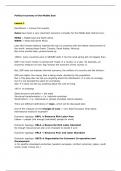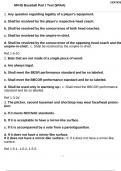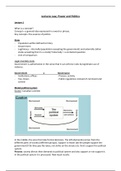College aantekeningen
Notes class 1/7 Economies of the Modern Middle East Leiden University
- Vak
- (5851VECME)
- Instelling
- Universiteit Leiden (UL)
These are notes taken in class on the course Economies of the Modern Middle East taught by Dr. CA Ennis. It contains the necessary material for the midterm: week 1/7. These notes are based on what she said + important information from her PowerPoints.
[Meer zien]













